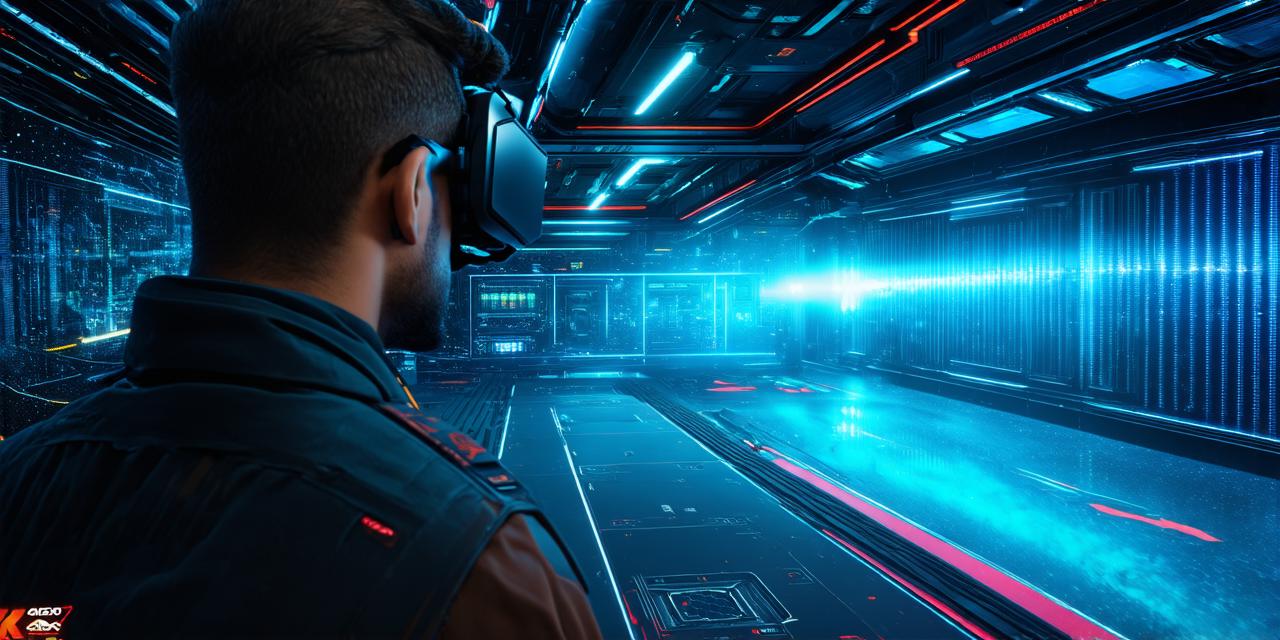Virtual reality (VR) games have become increasingly popular in recent years, offering players an immersive gaming experience like no other. But what exactly defines a VR game? In this article, we’ll explore the definition of a virtual reality game and its key features.
Definition of Virtual Reality Games
A virtual reality game is a type of video game that uses VR technology to create an immersive gaming experience for the player. VR games are designed to be played in a head-mounted display (HMD) or other VR device, such as a smartphone with a built-in camera. The main objective of VR games is to transport the player into a virtual environment that replicates real-life scenarios, providing a more realistic and engaging gaming experience than traditional video games.
Key Features of Virtual Reality Games
One of the key features of VR games is their ability to create an immersive gaming experience that feels like the player is actually in the game world. This is achieved through the use of sensors and cameras that track the player’s movements and adjust the game environment accordingly. For instance, if a player moves their head or body, the virtual environment will change accordingly, giving the impression that they are physically present in the game world.
Another important feature of VR games is their ability to simulate a wide range of environments, from realistic cityscapes to fantastical worlds filled with mythical creatures. These environments are often created using 3D modeling software, which allows developers to create incredibly detailed and lifelike objects and characters. The use of high-quality graphics and sound effects further enhances the immersive experience, making players feel like they are truly in the game world.
Virtual reality games also offer players a high degree of interactivity, allowing them to explore the game world and engage with its inhabitants in a variety of ways. This can include everything from physical actions like grabbing and manipulating objects to more abstract interactions like communicating with non-playable characters (NPCs). In some cases, VR games also incorporate motion sickness prevention techniques such as adjusting the game’s frame rate or using smoothing algorithms to reduce nausea.
Case Studies in Virtual Reality Games
There are many examples of successful VR games that have been developed for a variety of platforms, including gaming consoles, smartphones, and dedicated VR hardware. One popular example is “Beat Saber,” a rhythm game that uses virtual reality to create an immersive music experience for players. In this game, players use VR controllers as light sabers to slash through blocks that represent musical beats, creating a fun and engaging gameplay experience that feels like the player is actually in the game world.
Another successful VR game is “Job Simulator,” which allows players to simulate a variety of different jobs in a virtual office environment. In this game, players can take on roles like receptionist, chef, or maintenance worker, and use their hands and body to interact with objects and perform tasks within the game world. The game’s realistic graphics and sound effects make it feel like the player is actually working in an office, providing a unique and engaging gaming experience.
Expert Opinions on Virtual Reality Games
According to Dr. Sharon Greenfield, a researcher at the London School of Economics and Political Science, VR games offer players a unique opportunity to experience a level of immersion that is not possible with traditional video games. “Virtual reality technology allows players to fully immerse themselves in a game world, creating a more engaging and memorable gaming experience,” she says. Dr. Greenfield also notes that VR games have the potential to be used for educational purposes, such as teaching students about historical events or scientific concepts.
Summary
In conclusion, virtual reality games are a type of video game that uses VR technology to create an immersive gaming experience for the player. They offer players a high degree of interactivity, allowing them to explore a wide range of environments and engage with its inhabitants in a variety of ways. With continued advancements in VR technology, we can expect to see even more exciting and innovative VR games in the future. The potential applications of VR games are vast and varied, from entertainment to education to training and simulation. As the technology continues to evolve, it is likely that virtual reality will become an increasingly important part of our daily lives.
